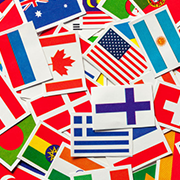General information
Important Drivers Behind Paper Receipt Persistence:
- Cash flow improvement is the main reason, but resistance to change remains strong.
- Widespread receipt fraud and payment issues are common pain points, yet not enough to force a full shift to digital.
- Software fragmentation in the B2B payment landscape means digital apps still often default to sending paper receipts behind the scenes.
Government and Industry Pressures:
An executive order to digitize U.S. government payments may help accelerate change, but progress is expected to be slow.
Outlook and Challenges:
Paper receipts are expected to remain in use for at least 20 more years due to institutional inertia and complex infrastructure. While digital solutions are growing, they still cover less than 1% of the paper receipt-dominated market. Main challenges include speeding up adoption, addressing fraud, and improving integration across payment systems.
Paper receipts aren’t going away anytime soon in the small business world. While digital alternatives offer clear advantages, deep-rooted habits, system limitations, and trust in card networks are keeping checks alive—for now.
Other news from Other countries
Saudi Arabia: ZATCA Sets Rules for 24th Group in E-Invoicing Rollout
 Other countries
Author: Ema Stamenković
Other countries
Author: Ema Stamenković
The ZATCA has set criteria for selecting establishments in the "Twenty-Fourth Group" for electronic invoicing integration. Notifications will go to those with VAT revenues over SAR 375,000 by June 30, 2026. The second phase includes linking systems to Fatura and issuing specific invoice formats. The first phase started on December 4, 2021, requiring taxpayers to stop using handwritten invoices and... Read more



The Growing Complexity of US Sales Tax on Services
 Other countries
Author: Ljubica Blagojević
Other countries
Author: Ljubica Blagojević
US sales tax traditionally applied to products, not services, but many states are expanding their tax base to include services—especially digital offerings like SaaS and ebooks. Services fall into four categories: business, personal, professional, and maintenance/repair. Five states have no sales tax, four tax services by default, and the rest tax only specifically listed services. Multi-state bus... Read more



South Africa Proposes Major VAT Reforms to Modernize Tax System
 Other countries
Author: Ljubica Blagojević
Other countries
Author: Ljubica Blagojević
South Africa’s 2025 draft TLAB and TALAB propose major VAT reforms to modernise the system and close compliance gaps. Key changes include extending intermediary rules to local suppliers, zero-rating silver exports and clinical trial services, exempting all basic education supplies (forcing some schools to deregister), removing low-value import thresholds, and tightening VAT registration with site... Read more



South Africa Releases VAT Draft to Advance E-Invoicing and Digital Reporting
 Other countries
Author: Ljubica Blagojević
Other countries
Author: Ljubica Blagojević
South Africa's National Treasury and Revenue Service introduces e-invoicing, e-reporting, and an interoperability framework to modernize the VAT system. On August 16, 2025, South Africa’s National Treasury and Revenue Service released a draft amending the VAT Law, introducing definitions for e-invoicing, e-reporting, and an interoperability framework to modernize the VAT system. E-invoicing... Read more



New Zealand’s e-Invoicing Mandate: A Concise Overview
 Other countries
Author: Ema Stamenković
Other countries
Author: Ema Stamenković
New Zealand is transitioning to e-invoicing as a standard, driven by the global Peppol Network and the regional PINT A-NZ specification. The Ministry of Business, Innovation and Employment (MBIE) oversees the adoption, with central public agencies required to receive e-invoices since March 2022. From January 2026, agencies processing over 2,000 domestic invoices annually must send and receive e-in... Read more



Malaysia Introduces 2025 Tax Reforms: E-Invoicing Rollout
 Other countries
Author: Ljubica Blagojević
Other countries
Author: Ljubica Blagojević
Malaysia's tax authority has introduced new tax measures and compliance requirements for 2025, including mandatory e-invoicing for taxpayers with annual income between 5 and 25 million ringgits, increased support for MSMEs, and a new tax handling branch. On August 22, the Malaysian Tax Authority published e-Bulletin No. 4/2025, which detailed a number of new tax laws and compliance standards for 2... Read more



Indonesia Reforms Digital Tax Collection for E-commerce
 Other countries
Author: Ljubica Blagojević
Other countries
Author: Ljubica Blagojević
Between May and July 2025, Indonesia introduced major reforms to strengthen e-commerce and digital tax collection. PERPRES-68/2025 creates a state-backed system to collect VAT on overseas digital sales, PMK-37/2025 appoints qualifying domestic and foreign platforms (PPMSE) as Article 22 income tax collectors with a 0.5% withholding on sellers’ revenue, and PER-12/2025 tightens VAT reporting and re... Read more


